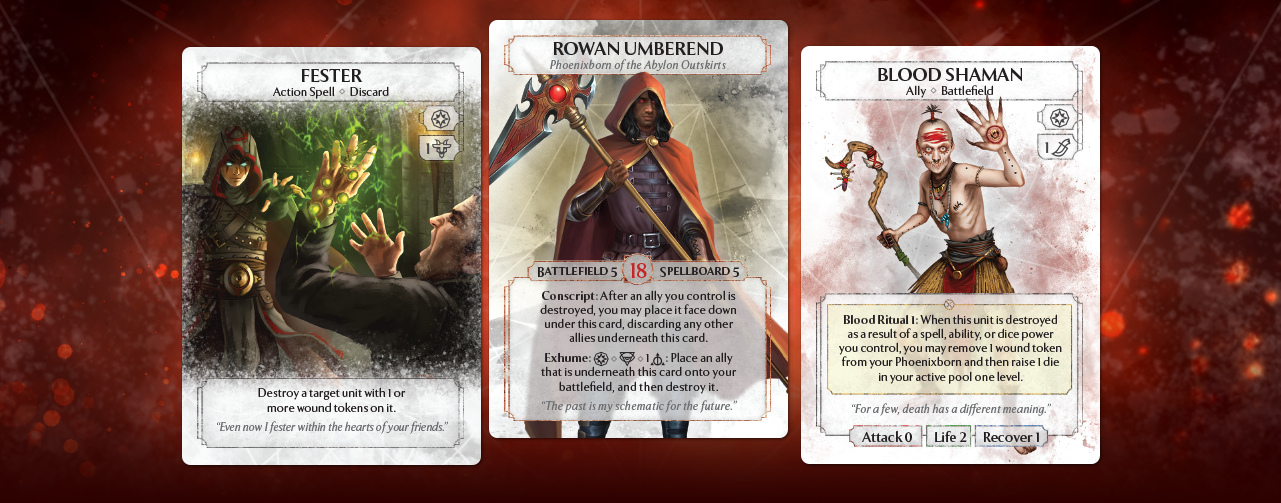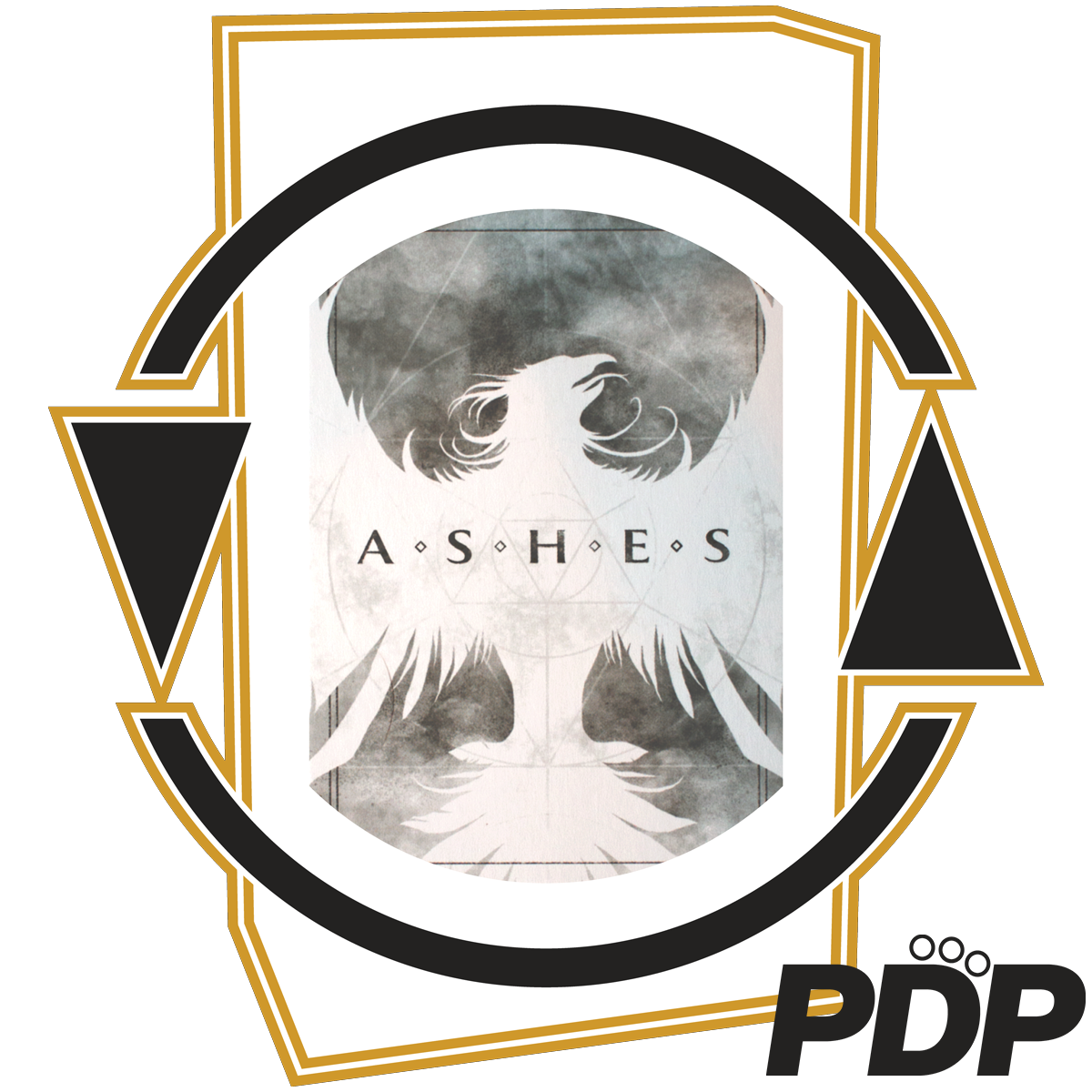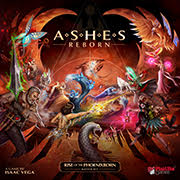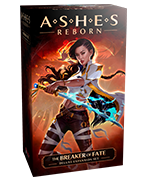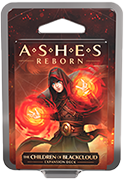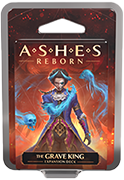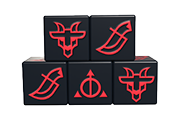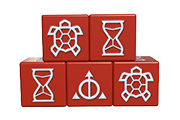Re-Constructed Deck - The Scholar of Suffering
Rousing the Ancients
Welcome back, Ashes players, to another installment of Re-Constructed. Once again, we find ourselves fast approaching the end of an era, as this will be the last of our new constructs.
Hopefully, you’re already aware of the deck building restrictions we’re working with; if not, read the last Re-Con article (or any of the previous ones). For all the time Phoenixborn, we’re also assuming you have the Breaker of Fates, as time dice will obviously be required to play them. The legacy of the Phoenixborn has been written in blood, a dark history of violence against a common foe, the Chimera. The very force that gave these majestic beings purpose has long since been dead and buried, but some fascinations run equally deep. One phoenixborn in particular can’t help but be drawn to these dark forces of purpose, and what he’ll find may have best remained entombed in the sands of Abylon.
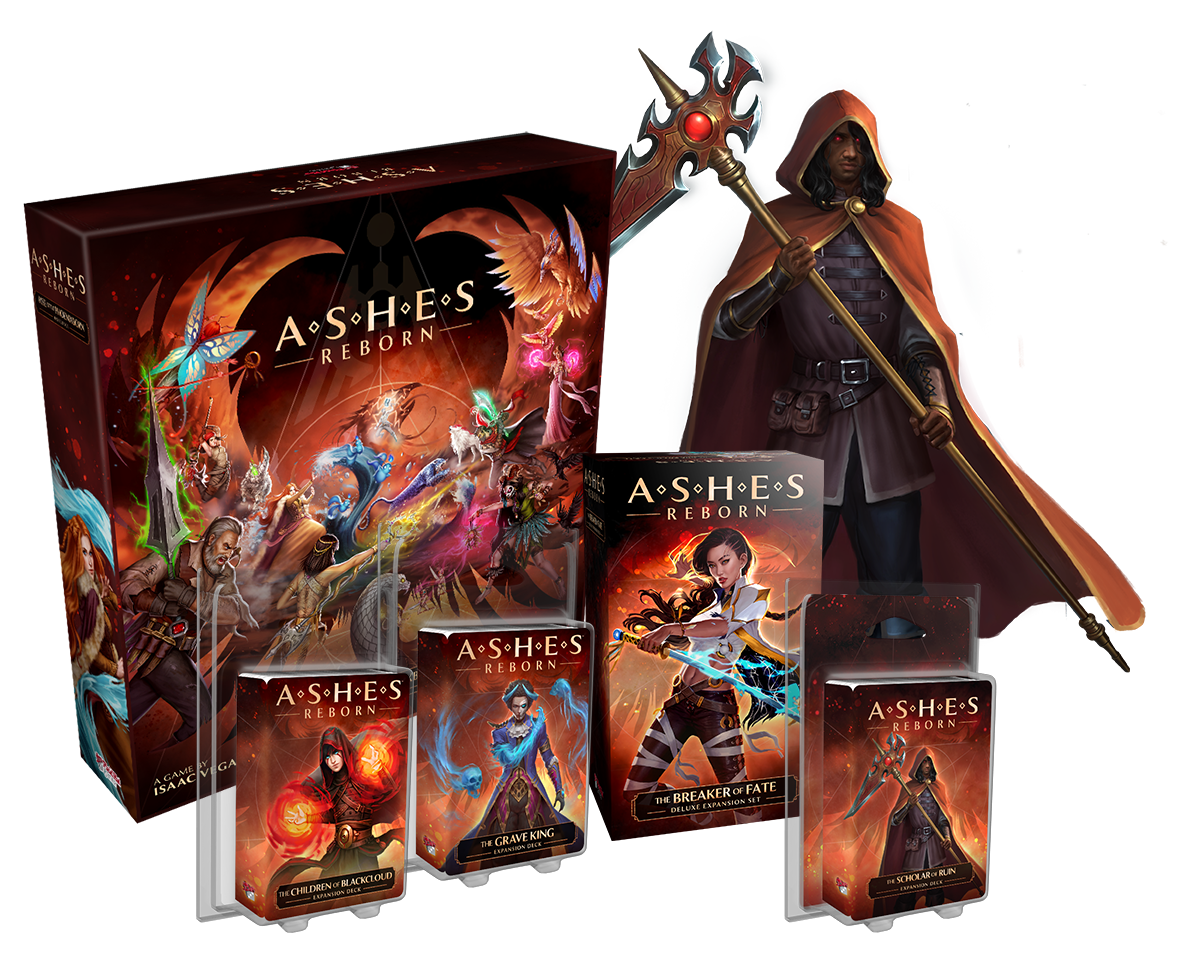
The Scholar of Suffering (Re-Rowan)
6x Ceremonial Dice, 4x Time Dice
1x Summon Blood Puppet
2x Summon Ruin Dweller
3x Chant of Erosion
1x Chant of Hostility
1x Chant of Sacrifice
1x Chant of Worship
1x Blood Shaman
3x Crypt Guardian
3x Knowledge Seeker
1x Rising Horde
1x Ritualist
2x Discovery
2x Era's End
3x Excavate
2x Fester
2x Rapture
1x Reclaim Soul
Despite Rowan’s grim determination, he’s actually a breath of fresh air for the game. Ceremonial and time magic find a nice midpoint with the concept of “tradition”, rituals performed in a cyclical fashion across time. This cycle is well represented in Rowan’s deck with a number of powerful effects that specifically trigger at the end of each round, the point of the game in which everything is reset and starts anew. The base level effects come from Ruin Dwellers and Crypt Guardians, high value units that force an answer from the opponent lest they generate additional value. Going further, you start generating additional pressure from Rowan’s unique card, Discovery, which generates Red Raindrops to slowly chip away at your opponent’s units. If you finish the ritual, you’ll be able to call forth the unholy Reborn Chimera, a devastating unit that warps the game heavily around its presence. And just in case these end of round effects weren’t calamitous enough, the addition of Era’s End adds more instances of them by creating artificial round endings. Era’s End – definitely a card to keep an eye on as the game develops. To aid in finding the tools for this great expedition, we also have the powerful Excavate, a card fetch and large point removal packed in one.
Of course, Rowan’s entire identity isn’t just built around Discovery, there’s also a fascinating subtheme built around…suffering, sadly. Rowan’s combination Conscript and Exhume abilities allow him to store dead allies and revive them, only to have them immediately die again. While a seemingly limited ability, every other card of the deck plays around them all too efficiently, from the addition of two new chants to benefit from death triggers (Erosion and Hostility), to a new collection of allies that all benefit from either entering (Ritualist), leaving (Crypt Guardian), or both (Knowledge Seeker). Further improving the consistency and agency of this death parade is Rapture, a new removal tool that pushes ceremonial magic into scary new territories of board control while also giving you more sacrifice tools.
Part of the challenge to navigating this precon comes with the presence of two isolated strategies each trying to drive the same deck. On the one hand, you have the time focused element of trying to assemble this long awaited engine, using Discovery to eventually unearth a Chimera. On the other, you have the ceremonial focused array of death/rebirth loops and ally-centric play. In building Rowan, usually you’ll need to focus more on one or the other. Given which of the two we want to narrow towards, this won’t be the easiest re-con to talk about, to the degree we may need to start at the end and work our way backwards.
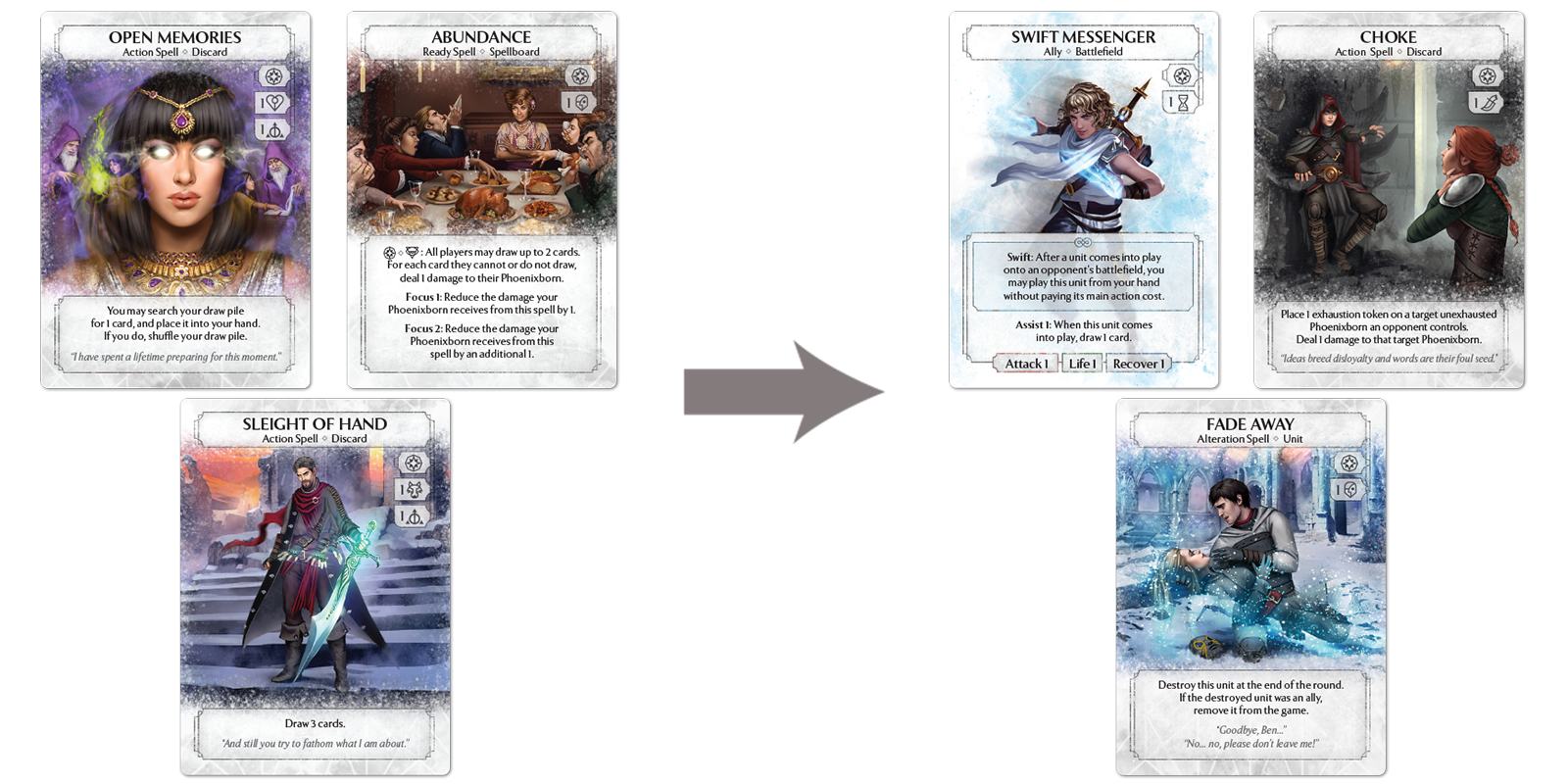
Taking it further:
The funny thing about Discovery and the Red Rains is that the entire package is fairly isolated and self-fulfilling, so there’s no need to really adjust it. Sure, you can supply Rowan with empowered draw effects like Abundance, Sleight of Hand and Hidden Power, or even skip to the end with Open Memories, but similar to Orrick’s Awakened State we need to be able to survive to the end consistently. After all, Rowan’s triggers are all back-loaded onto the “end of round” portion of the game, which means a whole bunch of “the round” has to go right for us. That’s why, on the list of potential swaps, I can at least get behind Swift Messenger since it’s cheap, works nicely with Exhume, and mounts a last second defense when one is needed. We may not have included it in this deck – mostly because I think Knowledge Seeker will get us much farther much faster – but I think any inclusions to Rowan should be made with the intent of actually playing with your opponent in mind, rather than simply trying to accelerate your special win condition. Era’s End is good, but it ain’t that good.
Among the substitutions that I may advise are elements centered around control. Cards like Choke, Blood Chains, and Reclaim Soul give you more stability, while cards like Fade Away and To Shadows help you better answer threats while also synergizing well with cards you’re already running – Fade Away is pretty good with Era’s End, and To Shadows is easy to work with using Crypt Guardian triggers. Along the same line, keep an eye out for ally triggers that can actually help your board position; I don’t mind Blood Archer, but I would probably take Anchornaut or Pain Shaman over it almost any day. While every cast of Discovery is immensely helpful, I find building 100% of your strategy around it leaves you a bit too vulnerable to more traditional Ashes play; if only people didn’t have units that just punch you in the face. Let’s keep retracing.
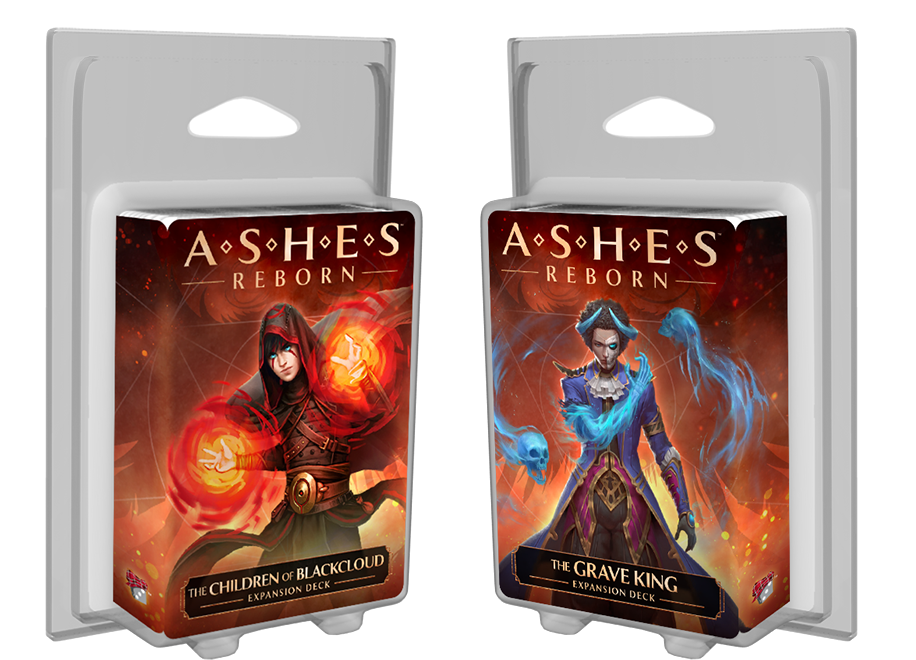
Recognizable Landmarks:
While there are some cool cards for Rowan in other dice types (I like illusion magic quite a bit here), we’re still playing by re-con rules, which means only ceremonial and time dice allowed. It can be a little tricky establishing a strong board position with those two types, as both tend to run on their own systems and can lag behind while stabilizing. Part of why I leaned into Brennen and James’ decks is because each offers a few desirable tools to expand what Rowan is already capable of. A greater variety of chants expands the usability of a card like Ritualist, and a greater availability of allies gives us the ability to answer a greater variety of board states. Chant of Sacrifice makes it easier for us to utilize Rowan’s abilities against stalling decks, Fester vastly improves our breadth of answers to tall threats by using Red Raindrops, and Rising Horde can enable a lightning fast defense force when one is needed. For these reasons, I find cutting either of these decks out of the picture to be a bit excruciating. If you had to cut one, I’d be inclined to say James since Brennen can fill some of the gaps he leaves behind; replace Rising Horde with Crimson Bomber, and Chant of Sacrifice plus Reclaim Soul being out means we’ll probably need Blood Chains to aid the sacrifice game.
Since we’re still working backwards, let’s get to arguably the most important part of the deck: the first five.

First Five:
Our first play of the first five is usually Chant of Erosion and either Summon Ruin Dweller or Ritualist. I’ll usually favor the slower play with Ruin Dweller, but if your opponent drops a turn one ally, you might want an ally of your own to avoid a face hit. The Ritualist play is important because you’re going to want to find a chant that’s helpful for the matchup…most of the time (more on this below). The way I think about it, Chant of Worship is good against midrange decks against which we want to hit our Discoveries faster while playing defense, Chant of Hostility is better against decks where the opponents have lots of high health units (pushing Ruin Dweller to 4 or Knowledge Seeker to 3 makes a huge difference), and Chant of Sacrifice is either a strong tool in the late game or helpful against an opponent that uses Blood Puppets or Weeping Spirits. Oh, and Chant of Erosion is basically good no matter what matchup we find ourselves in (and especially helpful against swarm stuff), which is why we’re still running three of them. The real kicker here is that no matter what chant you grab with Ritualist, you will be shortly throwing it away to pay for Discovery. We went to all the trouble of excavating this ritual just to throw it away? Absolutely, let me explain.
A somewhat crucial step of the first five plan is for the Ritualist to die so we can have Rowan dig up the body. Sadly, you don’t have a ton of agency towards this step, it’s usually up to your opponent to kill the Ritualist (I recommend keeping it up as a blocker). The reason we want this is because on Rowan’s replay of Ritualist, we can either fetch another new chant OR grab the one we buried in the dirt; regardless of which one you get, you should have enough dice to play it. This is also why you don’t necessarily need to find a chant for the current matchup, because maybe you just throw that one away and get a better one on the second fetch. By the end of Round 1, the hopeful outcome is that you’ve played three units, two chants, and some lovely chimera tears. From this point on, every round you survive comes with value through Red Raindrops, and the presence of multiple chants means killing our allies will always be a tad difficult.
In most cases you shouldn’t need to change your first five, it’s fairly robust and can deal with most basic situations. There may be some cases where going Knowledge Seeker instead of Ritualist is better just to have a slightly thicker unit on the board, and she still gives you an extra card on death for the sake of Discovery. There’s also a slightly quack play where you replace Chant of Erosion with Summon Blood Puppet against Phoenixborn with an especially small battlefield (4-5), just to heavily gum up the works. Rather than heavily adjust your first five, you’re going to be relying on plays like Excavate and Knowledge Seeker to get you to the cards you actively need.
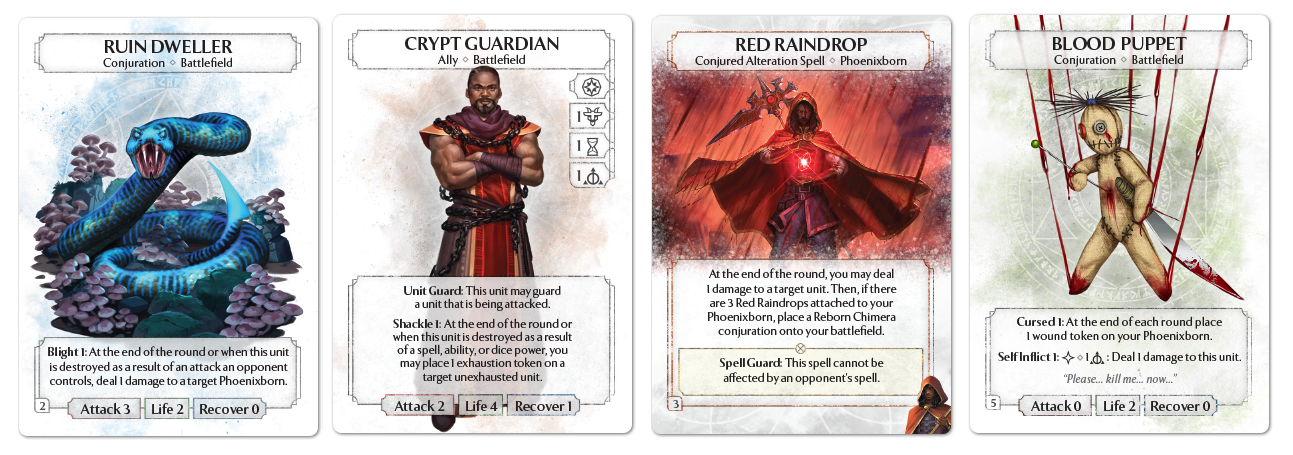
In case it wasn’t clear by now, most of Rowan’s deck is geared around playing hardline defense, largely because we have units and card effects that benefit us waiting it out till the end of the round. Raindrops spill damage around the table, Crypt Guardians lock down our opponent’s units, and Ruin Dwellers slowly whittle our opponent’s life down. Also mixed in this pot is the old clinger itself, Blood Puppet adds to our “eventual” victories while also synergizing well with Era’s End. Making this whole package tougher is Rowan’s ability set, which makes a hardline defense of allies and the presence of chants even more treacherous. Discovery is fun, and we do actively want to get to that third raindrop, but I don’t think we ever need to rush it with Open Memories or crazy draw. If we play with a solid foundation, we’ll get there eventually.
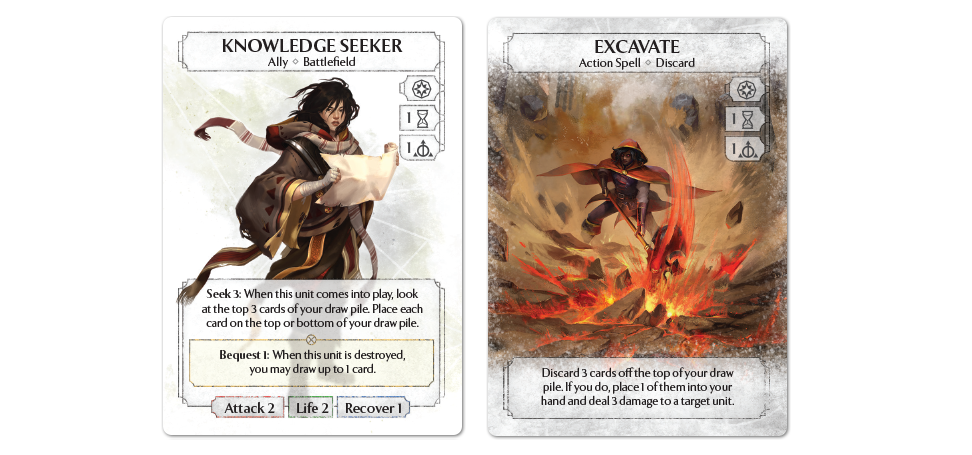
Your two primary ways of chasing Discoveries is Knowledge Seeker and Excavates. One of these is a solid 2/2 unit that synergizes disgustingly well with Rowan’s deathloops, and the other is a 3-damage point removal spell. Both of these cards dig three cards deep looking for specifics (Knowledge Seeker can technically dig up to four), which is a lot for a 30 card deck especially since we’ve probably already gone about 10 cards deep by the time we even start looking. This is part of why I’m only running two copies of Discovery; since the card keeps shuffling back in and we’re already playing one in the first round, it shouldn’t be that difficult to get our two copies. And, we don’t need to use these amazing fetches only on Discovery.
Among the new additions to the re-con are various singleton allies that add a lot of spice to the deck. Blood Shaman is interesting because it does very well with all our sacrifice outlets like Chant, Reclaim Soul, and Rapture, but it also auto-triggers when channeled through Rowan’s ability since the ability itself kills the unit (in combination with Chant of Sacrifice and the ceremonial dice power, we can technically loop this forever). Rising Horde provides a little micro army on death, and being able to effectively “pocket” another two Fallen on demand is pretty great against hyper aggressive decks. We’ve also added two copies of Fester, a card that is usually pretty solid, but especially gross when activating through Red Raindrops and Erosions.
Everything Old is New Again
Wow, look at that. We did it again. 7 more re-cons with which to enjoy the game at (hopefully) all levels of play. I hope you enjoyed this whole thing the second time around. I certainly did.
Last time we were left with the proposition of “What happens now?” since at the time, Jericho was the only thing officially spoiled. Now the entire time cycle is complete, so again the question begs: “What happens now?”. Well, obviously there’s more Ashes on the horizon, and I gotta say the new stuff is…fairly menacing. It’s all very exciting, I can assure you. We have new cards, yes, but also a completely new way to play the game. I don’t want to give it away, but I think Rowan had the right idea.
Just one little thought comes to mind. The Re-constructed decks were always intended to be a light and fun way to experience what makes these phoenixborn special without getting too gnarly on the deck-building front. Limited swaps and roughly equivalent dice pools were a way of helping bridge the gap between standard precons and the fully customizable experience, and that’s a job I feel the decks are doing just fine. What I didn’t initially predict is how many people would be playing those decks almost like its own format. With all the new cards that have been released in the last year, I thought it might be fun to go back and touch up the old decks for fun.
So join us one last time. After all, we’re still working backwards, right?
Andrew DiLullo is an animator, a game designer, and luckily also a writer. Having first discovered Ashes at the tail end of the first round of expansions in 2016, he’s been playing ever since and currently heads the Bay Area Ashes group in California. He was especially active in several community projects after Ashes was canceled the first time, and now puts his attention to Reborn as the game starts anew. He’s currently designing a board game in his spare time, and occasionally writes on his online journal: The Lighthouse Library.


